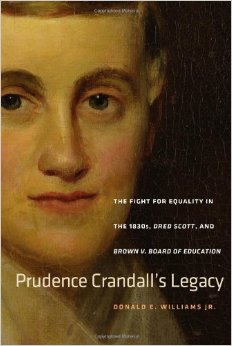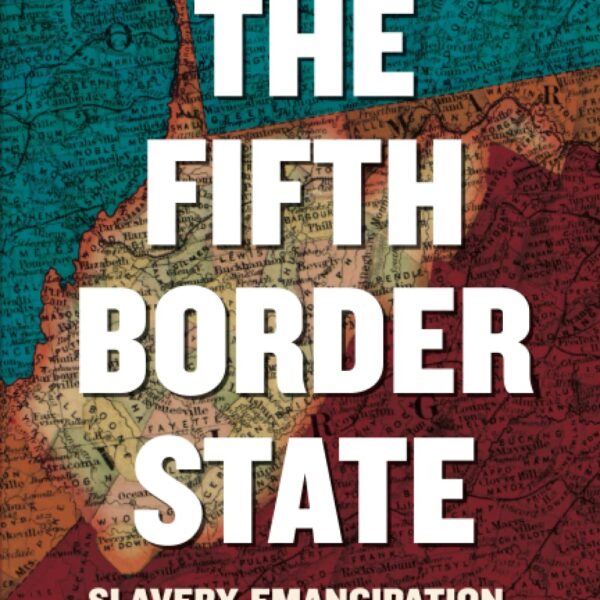The World the Civil War Made edited by Gregory P. Downs and Kate Masur. University of North Carolina Press, 2015. Paper, ISBN: 978-1469624181. $29.95.
 A brief review such as this can hardly do justice to the provocative interpretative power of The World the Civil War Made. This volume will radically change how historians approach the post-Civil War period. Derived from a conference of the same name at Pennsylvania State University, the anthology, edited by Gregory P. Downs and Kate Masur, fundamentally challenges our assumptions about the long, tortured aftermath of a civil war we only thought we knew. Nearly three decades removed from Eric Foner’s magisterial and transformative Reconstruction: An Unfinished Revolution, 1863-1877 [1988], the volume’s essays probe the limits of the historiographical dominance that Foner has enjoyed. Indeed, in his famous review of Foner’s work, Michael Perman wondered whether the final word had been written on this controversial period of American history. Although analogous to Maris A. Vinovskis’s field-changing 1989 proposition that social historians had lost the Civil War, Perman’s question had, with a few exceptions, gone largely untested. Now, marshaling an impressive cast of scholars, asking new questions, wielding innovative methodologies, and declaring fresh paradigms, Downs’s and Masur’s volume reveals that the field has matured enough not to displace Foner, but rather to complicate, expand, and collapse existing interpretations about the kind of world America’s civil war wrought.
A brief review such as this can hardly do justice to the provocative interpretative power of The World the Civil War Made. This volume will radically change how historians approach the post-Civil War period. Derived from a conference of the same name at Pennsylvania State University, the anthology, edited by Gregory P. Downs and Kate Masur, fundamentally challenges our assumptions about the long, tortured aftermath of a civil war we only thought we knew. Nearly three decades removed from Eric Foner’s magisterial and transformative Reconstruction: An Unfinished Revolution, 1863-1877 [1988], the volume’s essays probe the limits of the historiographical dominance that Foner has enjoyed. Indeed, in his famous review of Foner’s work, Michael Perman wondered whether the final word had been written on this controversial period of American history. Although analogous to Maris A. Vinovskis’s field-changing 1989 proposition that social historians had lost the Civil War, Perman’s question had, with a few exceptions, gone largely untested. Now, marshaling an impressive cast of scholars, asking new questions, wielding innovative methodologies, and declaring fresh paradigms, Downs’s and Masur’s volume reveals that the field has matured enough not to displace Foner, but rather to complicate, expand, and collapse existing interpretations about the kind of world America’s civil war wrought.
To rethink the long-term implications of the Civil War, scholars must, Downs and Masur suggest, abandon the term “reconstruction” when framing the postwar scene. The word is limited by its historiographical and historical conceptions as a moment of social, political, and legal change in the post-bellum American South. The book’s various contributors instead contend that the war’s staggering consequences stretched well beyond the lands of the former Confederacy, influencing the West, northern intellectual culture, Native American life, the awesome power and feeble scope of the federal state, economic development in the Pacific, labor organization both at home and abroad, and even the worldview of Karl Marx. Thus, Downs and Masur commissioned each essay to step out of the comfortable boundaries of a North-South conflict and to reimagine the chronological, geographic, ideological, cultural, and political landscapes of a world shaped by the Civil War’s enormous grasp.
In so doing, the volume is united by several principal themes. Challenging the notion that the postwar federal Union emerged as an authoritative, commanding leviathan, the essays present the startling, limited scope of government, which Downs and Masur call the “stockade state.” The government was indeed “powerful within narrow geographical boundaries but limited in [its] reach, sometimes capable of enforcing [its] will, sometimes overpowered, and almost always beset by both competing power centers and individuals who sought to live beyond the reach of most authority” (6-7). Steeped in a sophisticated sense of irony, the essays explain that the war reshaped unprecedented notions of federal power and revolutionized the relationship between the body politic and state. Yet that same state was inconsistent in its application of inclusionary citizenship and halting in the ability to enforce its will, a privilege won in dominant fashion on the field of battle. Thus, the very meaning of freedom, one of the war’s central consequences, remained largely contested long after official hostilities ceased. While historians have long explored the limits of postwar freedom, especially in the troubled aftermath of emancipation, the essays here capture an era not defined exclusively by liberal idealism, but instead by “a jumble of surprisingly open-ended and often illiberal practices” (14). In this framing, the anthology engages the age-old question of whether the Civil War constituted a moment of continuity or change. The essays suggest that, depending on temporal and spatial applications, both concepts partnered to create a postwar world that looked confusing, unfinished, and just as problematic as that which existed before 1865.
All of the volume’s essays engage these multiple themes in various ways. Laura F. Edwards demonstrates how the local conditions of grassroots freedom oftentimes shaped federal legal protections and rights claims made predominately by African Americans. In contrast, the limits of emancipation and the free labor ideal emerged in the West which, as Stacey L. Smith argues, revealed the geographic complications of ending coercive labor practices across a broader expanse the South alone. Remaining in the West, Stephen Kantrowitz shows how Wisconsin’s Ho-Chunk people utilized the language of free labor and “civilization,” without adopting the white ideological premises of such concepts, to resist federal attempts at removal.
The long-term implications of Confederate defeat and the federal government’s inability to acknowledge the lingering spirit of a slaveholding nation predicated exclusively on white supremacy inform essays by K. Stephen Price, Luke E. Harlow, and Kidada E. Williams. Exploring how southern ruins were imagined by northern visionaries in the immediate wake of the war as edifices on which to transform the defeated region into the Republican vision, Prince argues that persistent rebel intransigence and an increasingly ambivalent state acted in concert to stall northern idealism. Exhibiting the power of faith, Harlow explains how white southerners continued to draw on a defined proslavery Christianity to validate the supremacy of their region and race, while also arguing that defiance against the postwar order was sanctioned by Holy Scripture. Williams reveals the violent consequences of such white defiance, drawing on African Americans’ testimonies of psychological and physical damage endured from brutal encounters with night-riding terrorists. All three essays raise the sobering question: what kind of white southern “defeat” did the Civil War leave in its wake?
Conversely, essays by C. Joseph Genetin-Pilawa, Amanda Claybough, Barbara Krauthammer, Crystal N. Feimster, and Amy Dru Stanley all draw on diverse interpretations of the kind of Union that emerged and was imagined long after 1865. Genetin-Pilawa examines Ely Parker’s vision for Native American autonomy, a vision that conflicted with and was ultimately crushed by Republican dreams of a single, united, assimilated nation. The perceived corruption and distant bureaucracy in Washington came under attack in intellectual circles as, according to Claybough, novelists framed the capitol city with skepticism and ambivalence. Krauthammer redirects our attention back to the West where the question of emancipation emerged among the great Indian nations, most of which entered into treaties in 1866 with the United States, acts that delayed black freedom beyond familiar timelines, while also expanding the purview of federal control into Indian Territory. African American women’s protests against sexual assault—which dated to the antebellum period, grew during the Civil War, and blossomed during Reconstruction—pushed Republicans, according to Feimster, into adopting policies rooted in racial equality. As a microcosm of the postwar period itself, black women’s protections diminished when Republicans also abandoned the dream of racial justice. However, the quest for human rights, which Stanley deems a central theme of the postwar era, was enshrined in the Civil Rights Act of 1875, a document that revolutionized the Thirteenth and Fourteenth Amendments.
The refrain of “revolution” informs the volume’s final two selections. Andrew Zimmerman steps out of the geographic boundaries of North America, looking to Karl Marx’s and Friedrich Engels’s interpretations of the Civil War, which filled the European revolutionaries with hope that, perhaps, fundamental social and economic change were still possible. Steven Hahn, in the collection’s afterword—a piece that needs to be assigned in every graduate colloquium— declares emphatically that such changes indeed occurred, rooted in transformations in the relationship between individuals, the state, labor and capital, convulsions that rocked not only the American South and the federal Union, but also the entire world, all of which had been profoundly remade by the Civil War.
Andrew F. Lang is Assistant Professor of History at Mississippi State University.




